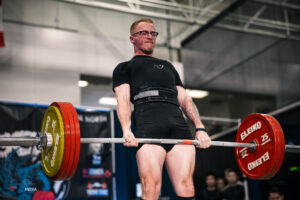From the Gym to the Boardroom: How Regular Exercise Boosts Productivity and Creativity in Business
Physical fitness plays a crucial role in achieving business success. Regular exercise not only benefits one’s health but also enhances productivity and creativity in the workplace. In this article, we will explore the connection between physical fitness and business success, backed by studies and personal experience.
The Link Between Physical Fitness and Productivity
One of the most significant benefits of physical fitness in the workplace is an increase in productivity. Exercise has been proven to increase blood flow to the brain, which improves cognitive function, focus, and memory retention. It also increases energy levels and reduces stress, leading to a more focused and productive workday.
A study conducted by the University of Bristol found that employees who exercised before work or during lunch breaks reported a 15% increase in productivity compared to those who didn’t exercise. By making physical activity a priority, entrepreneurs can experience a similar boost in productivity.
The Relationship Between Physical Fitness and Creativity
In addition to improving productivity, physical fitness has also been shown to enhance creativity in the workplace. Exercise promotes the release of endorphins, which improve mood and reduce stress levels. It also stimulates the brain’s hippocampus, which is responsible for creativity and imagination.
A study by Stanford University found that participants who engaged in a simple walking routine improved their creativity by 60%. By incorporating regular physical activity into their routine, entrepreneurs can experience similar benefits in terms of creativity and innovation.
The Benefits of Working with a Personal Trainer
While physical fitness is essential, achieving fitness goals can be challenging, especially for busy entrepreneurs. This is where personal trainers come in. Personal trainers provide customized fitness plans and offer guidance and support to help entrepreneurs reach their goals.
A study by the International Journal of Sports Science found that working with a personal trainer can increase fitness levels by up to 30% compared to working out alone. Personal trainers can also help entrepreneurs integrate fitness into their busy schedules and establish a fitness routine that works with their schedule.
The Role of Physical Fitness in Work-Life Balance
As entrepreneurs, it’s easy to get consumed by work-related tasks, leaving little time for self-care. However, by prioritizing physical fitness, entrepreneurs can achieve a better work-life balance. Regular exercise can help reduce stress levels and improve overall health, leading to a more balanced and fulfilling life.
Additionally, physical activity can serve as an outlet for stress, allowing entrepreneurs to clear their minds and come back to work with a renewed focus. By incorporating physical activity into their routine, entrepreneurs can achieve a better balance between work and personal life.
The Importance of a Holistic Approach to Success
Ultimately, physical fitness is just one aspect of a holistic approach to success. To achieve long-term success, entrepreneurs must prioritize all aspects of their lives, including their physical, emotional, and mental health. By prioritizing self-care, entrepreneurs can achieve a more balanced and fulfilling life, which can ultimately lead to greater success in their business endeavors.
To sum up, physical fitness is crucial to achieving success in the business world. Regular exercise not only improves health but also boosts productivity and creativity. Working with a personal trainer can help entrepreneurs achieve their fitness goals and ultimately lead to greater success in their business endeavors. By prioritizing physical fitness and taking a holistic approach to success, entrepreneurs can achieve a more balanced and fulfilling life.
About the Author:
Glen Hopkins is a successful entrepreneur and fitness enthusiast. He is a local, South Surrey Realtor and self-employed for 24 years and counting. In his free time, Glen enjoys hiking, cycling, tennis, and weight training.


